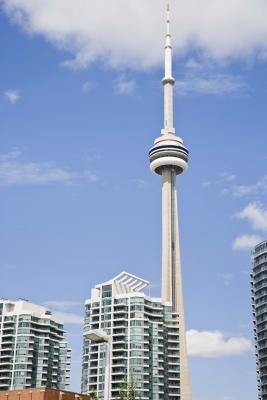
In Ontario, Canada, motorcycles are subject to most of the laws that apply to all motor vehicles. Ontario recognizes three distinct classes of motorcycles: standard motorcycles, limited-speed motorcycles or scooters, and motor-assisted bicycles or mopeds. Licensing for motorcycle drivers is divided into several classes, including graduated licenses, which are similar to learner's permits in the U.S.
The province of Ontario defines a motorcycle as a self-propelled vehicle with a seat or saddle for the driver, designed to travel with not more than three wheels in contact with the road. It includes scooters but not motor-assisted bicycles or "motorcyclettes." There are separate definitions for scooters and mopeds.
Under Ontario law, a limited-speed motorcycle (LSM) is a motorcycle capable of speeds of at least 20 mph but not more than 44 mph. An LSM has a maximum displacement of 50 cc. Those LSMs manufactured after 1988 must have a label on the vehicle identifying it as an "LSM/MVL."
A moped, or motor-assisted bicycle, is defined in Ontario as a bicycle with pedals to propel the bicycle that are operable at all times. These vehicles are limited to speeds of 31 mph or less and cannot have a clutch or motor-driven gearbox that transfers power to the driven wheel. They can weigh no more than 121 lbs.
All motorcycle operators in Ontario are required to wear a helmet with a chin strap securely fastened under the chin. Motorcycle passengers under the age of 16 must also wear a helmet with the chin strap securely fastened.
Ontario law stipulates certain equipment requirements for motorcycles that are driven on public roadways. Motorcycles manufactured after January 1, 1970 must have a headlight displaying white light only, and a taillight which displays red light only. These lights must be lit at any time that the motorcycle is operated on a public roadway. Motorcycles with a sidecar must have two headlights. Motorcycles manufactured before January 1, 1970 are only required to have the lights on a half hour before sunset until a half hour after sunrise and when visibility is limited to 164 yards or less because of insufficient natural light.
All motorcycles operated on Ontario public roadways are required to have front and rear brakes, each equipped with a separate means of application. Motorcycles manufactured or imported into Canada after January 1, 1971 must have at least one rear-view mirror. Motorcycles in Ontario are exempt from the law requiring an odometer.
Ontario issues 15 distinct classes of driver's license. Motorcycle licenses include Class M, which allows a driver to operate any motorcycle, including limited-speed motorcycles (motor scooters) and motor-assisted bicycles (mopeds). Drivers with a Class M with condition L (LSM/Moped) may only operate a limited-speed motorcycle or moped.
There are also several graduated levels of motorcycle licenses in Ontario, which are similar to learner's permits in the U.S. The M1 license allows holders to drive a motorcycle under certain conditions. The holder of an M2 license may only drive a motorcycle if they have a blood alcohol level of zero. The M2 with conditional L (LSM/Moped) permits the holder to operate a limited-speed motorcycle or moped only with the same blood alcohol level restriction as the standard Class M2 license.